Bouncing Dynamics of Impact Droplets on the Biomimetic Plane and Convex Superhydrophobic Surfaces with Dual-Level and Three-Level Structures
Abstract
1. Introduction
2. Experimental Section
2.1. Materials and Methods
2.2. Design of Dual-Level Structure Imitating Lotus Leaf Surface and Three-Level Structure Imitating Rice Leaf Surface
3. Results and Discussion
3.1. Relationship between Surface Microstructure and Wettability
3.2. Analysis of Impact Behavior of Water Droplet
4. Conclusions
Supplementary Materials
Author Contributions
Funding
Acknowledgments
Conflicts of Interest
References
- Azimi, G.; Dhiman, R.; Kwon, H.M.; Paxson, A.T.; Varanasi, K.K. Hydrophobicity of rare-earth oxide ceramics. Nat. Mater. 2013, 12, 315–320. [Google Scholar] [CrossRef] [PubMed]
- Yarin, A.L. Drop impact dynamics: Splashing, spreading, receding, bouncin. Annu. Rev. Fluid Mech. 2006, 38, 159–192. [Google Scholar] [CrossRef]
- Richard, D.; Clanet, C.; Quéré, D. Surface phenomena: Contact time of a bouncing drop. Nature 2002, 417, 811. [Google Scholar] [CrossRef] [PubMed]
- Reyssat, M.; Richard, D.; Clanet, C.; Quére, D. Dynamical superhydrophobicity. Faraday Discuss. 2010, 146, 19–33. [Google Scholar] [CrossRef]
- Zheng, H.; Chang, S.N.; Zhao, Y.Y. Anti-icing & icephobic mechanism and applications of superhydrophobic/ultra slippery surface. Prog. Chem. 2017, 29, 102–118. [Google Scholar]
- Shen, Y.Z.; Wu, X.H.; Tao, J.; Zhu, C.L.; Lai, Y.K.; Chen, Z. Icephobic materials: Fundamentals, performance evaluation, and applications. Prog. Mater. Sci. 2019, 103, 509–557. [Google Scholar] [CrossRef]
- Kulinich, S.A.; Farhadi, S.; Nose, K.; Du, X.W. Superhydrophobic surfaces: Are they really ice-repellent? Langmuir 2011, 27, 25–29. [Google Scholar] [CrossRef]
- Kulinich, S.A.; Farzaneh, M. Ice adhesion on super-hydrophobic surfaces. Appl. Surf. Sci. 2009, 255, 8153–8157. [Google Scholar] [CrossRef]
- Ronneberg, S.; Laforte, C.; Volat, C.; He, J.Y.; Zhang, Z.L. The effect of ice type on ice adhesion. AIP Adv. 2019, 9, 055304. [Google Scholar] [CrossRef]
- Song, M.R.; Liu, Z.H.; Ma, Y.J.; Dong, Z.C.; Wang, Y.L.; Jiang, L. Reducing the contact time using macro anisotropic superhydrophobic surfaces—Effect of parallel wire spacing on the drop impact. NPG Asia Mater. 2017, 9, e415. [Google Scholar] [CrossRef]
- Mazloomi, M.A.; Chikatamarla, S.S.; Karlin, I.V. Drops bouncing off macro-textured superhydrophobic surfaces. J. Fluid Mech. 2017, 824, 866–885. [Google Scholar] [CrossRef]
- Regulagadda, K.; Bakshi, S.; Das, S.K. Droplet ski-jumping on an inclined macro-textured superhydrophobic surface. Appl. Phys. Lett. 2018, 113, 103702. [Google Scholar] [CrossRef]
- Huang, L.; Song, J.L.; Wang, X.Y.; Zhao, C.L.; Liu, Z.A.; Liu, J.Y. Soft elastic superhydrophobic cotton: A new material for contact time reduction in droplet bouncing. Surf. Coat. Technol. 2018, 347, 420–426. [Google Scholar] [CrossRef]
- Liao, R.J.; Zuo, Z.P.; Chao, G.; Yuan, Y.; Zhuang, A.Y. Fabrication of superhydrophobic surface on aluminum by continuous chemical etching and its anti-icing property. Appl. Surf. Sci. 2014, 317, 701–709. [Google Scholar] [CrossRef]
- Ying, H.; Sarkar, D.K.; Chen, X.G. Superhydrophobic aluminum alloy surfaces prepared by chemical etching process and their corrosion resistance properties. Appl. Surf. Sci. 2015, 356, 1012–1024. [Google Scholar]
- Kumar, A.; Gogoi, B. Development of durable self-cleaning superhydrophobic coatings for aluminium surfaces via chemical etching method. Tribol. Int. 2018, 122, 114–118. [Google Scholar] [CrossRef]
- Wang, Y.Q.; Shi, H.X.; Li, X.G. Revisiting the fabrication of superhydrophobic aluminum surfaces and their use as soft substrates for droplet manipulation. J. Mater. Sci. 2019, 54, 7469–7482. [Google Scholar] [CrossRef]
- Song, J.L.; Xu, W.J.; Liu, X.; Lu, Y.; Sun, J. Electrochemical machining of super-hydrophobic Al surfaces and effect of processing parameters on wettability. Appl. Phys. A Mater. 2012, 108, 559–568. [Google Scholar] [CrossRef]
- Sun, Y.K.; Zhao, D.Y.; Song, J.L.; Wang, C.; Zhang, Z.H.; Huang, L.; Liu, J.Y.; Liu, Z.A. Rapid fabrication of superhydrophobic high-silicon aluminum alloy surfaces with corrosion resistance. Results Phys. 2019, 12, 1082–1088. [Google Scholar] [CrossRef]
- Zheng, S.L.; Li, C.; Fu, Q.T.; Hu, W.; Xiang, T.F.; Wang, Q.; Du, M.P.; Liu, X.C.; Chen, Z. Development of stable superhydrophobic coatings on aluminum surface for corrosion-resistant, self-cleaning, and anti-icing applications. Mater. Des. 2016, 93, 261–270. [Google Scholar] [CrossRef]
- Saffari, H.; Sohrabi, B.; Noori, M.R.; Bahrami, H.R.T. Optimal condition for fabricating superhydrophobic Aluminum surfaces with controlled anodizing processes. Appl. Surf. Sci. 2017, 435, 1322–1328. [Google Scholar] [CrossRef]
- Boinovich, L.B.; Modin, E.B.; Sayfutdinova, A.R.; Emelyanenko, K.A.; Vasiliev, A.L.; Emelyanenko, A.M. Combination of functional nanoengineering and nanosecond laser texturing for design of superhydrophobic aluminum alloy with exceptional mechanical and chemical properties. ACS Nano 2017, 11, 10113–10123. [Google Scholar] [CrossRef] [PubMed]
- Long, J.Y.; Zhong, M.L.; Zhang, H.J.; Fan, P.X. Superhydrophilicity to superhydrophobicity transition of picosecond laser microstructured aluminum in ambient air. J. Colloid. Interf. Sci. 2015, 441, 1–9. [Google Scholar] [CrossRef] [PubMed]
- Lian, Z.X.; Xu, J.K.; Yu, Z.J.; Yu, P.; Yu, H.D. A simple two-step approach for the fabrication of bio-inspired superhydrophobic and anisotropic wetting surfaces having corrosion resistance. J. Alloy Compd. 2019, 793, 326–335. [Google Scholar] [CrossRef]
- Iribarren, A.; Rivero, P.J.; Berlanga, C.; Larumbe, S.; Miguel, A.; Palacio, J.F.; Rodriguez, R. Multifunctional protective PVC-ZnO nanocomposite coatings deposited on aluminum alloys by electrospinning. Coatings 2019, 9, 216. [Google Scholar] [CrossRef]
- Zhao, X.; Jin, Z.Q.; Zhang, B.B.; Zhai, X.F.; Liu, S.; Sun, X.L.; Zhu, Q.J.; Hou, B.R. Effect of graphene oxide on anticorrosion performance of polyelectrolyte multilayer for 2A12 aluminum alloy substrates. RSC Adv. 2017, 7, 33764–33774. [Google Scholar] [CrossRef]
- Manoudis, P.N.; Karapanagiotis, I.; Tsakalof, A.; Zuburtikudis, I.; Panayiotou, C. Superhydrophobic composite films produced on various substrates. Langmuir 2008, 24, 11225–11232. [Google Scholar] [CrossRef]
- Bird, J.C.; Dhiman, R.; Kwon, H.M.; Varanasi, K.K. Reducing the contact time of a bouncing drop. Nature 2013, 503, 385–388. [Google Scholar] [CrossRef]
- Song, J.L.; Gao, M.Q.; Zhao, C.L.; Lu, Y.; Huang, L.; Liu, X.; Carmalt, C.J.; Deng, X.; Parkin, I.P. Large-area fabrication of droplet pancake bouncing surface and control of bouncing state. ACS Nano 2017, 11, 9259–9267. [Google Scholar] [CrossRef]
- Guo, C.F.; Zhao, D.Y.; Sun, Y.J.; Wang, M.J.; Liu, Y.H. Droplet impact on anisotropic superhydrophobic surfaces. Langmuir 2018, 34, 3533–3540. [Google Scholar] [CrossRef]
- Liu, Y.H.; Andrew, M.; Li, J.; Yeomans, J.M.; Wang, Z.K. Symmetry breaking in drop bouncing on curved surfaces. Nat. Commun. 2015, 6, 10034. [Google Scholar] [CrossRef] [PubMed]
- Zhang, H.X.; Yi, X.; Du, Y.X.; Zhang, R.; Zhang, X.W.; He, F.; Niu, F.L.; Hao, P.F. Dynamic behavior of water drops impacting on cylindrical superhydrophobic surfaces. Phys. Fluids 2019, 31, 032104. [Google Scholar] [CrossRef]
- Andrew, M.; Liu, Y.H.; Yeomans, J.M. Variation of the contact time of droplets bouncing on cylindrical ridges with ridge size. Langmuir 2017, 33, 7583–7587. [Google Scholar] [CrossRef] [PubMed]
- Liu, Y.H.; Moevius, L.; Xu, X.P.; Qian, T.Z.; Yeomans, J.M.; Wang, Z.K. Pancake bouncing on superhydrophobic surfaces. Nat. Phys. 2014, 10, 515–519. [Google Scholar] [CrossRef]
- Bae, W.G.; Song, K.Y.; Rahmawan, Y.; Chu, C.N.; Kim, D.; Chung, D.K.; Suh, K.Y. One-step process for superhydrophobic metallic surfaces by wire electrical discharge machining. ACS Appl. Mater. Interfaces 2012, 4, 3685–3691. [Google Scholar] [CrossRef]
- Lian, Z.X.; Xu, J.K.; Wang, Z.B.; Wang, Z.C.; Wang, Z.K.; Yu, H.D. Fabrication and applications of two- and three-dimensional curved surfaces with robust underwater superoleophobic properties. J. Mater. Sci. 2017, 52, 1123–1136. [Google Scholar] [CrossRef]
- Liang, Y.H.; Peng, J.A.; Li, X.J.; Huang, J.B.; Qiu, R.X.; Zhang, Z.H.; Ren, L.Q. Wettability and contact time on a biomimetic superhydrophobic surface. Materials 2017, 10, 254. [Google Scholar] [CrossRef]
- Zhou, C.L.; Wu, X.Y.; Lu, Y.J.; Wu, W.; Zhao, H.; Li, L.J. Fabrication of hydrophobic Ti3SiC2, surface with micro-grooved structures by wire electrical discharge machining. Ceram. Int. 2018, 44, 18227–18234. [Google Scholar] [CrossRef]
- Koch, K.; Bhushan, B.; Barthlott, W. Multifunctional surface structures of plants: An inspiration for biomimetics. Prog. Mater. Sci. 2009, 54, 137–178. [Google Scholar] [CrossRef]
- Feng, L.; Li, S.H.; Li, Y.S.; Li, H.J.; Zhang, L.J.; Zhai, J.; Song, Y.L.; Liu, B.Q.; Jiang, L.; Zhu, D.B. Super-hydrophobic surfaces: From natural to artificial. Adv. Mater. 2002, 14, 1857–1860. [Google Scholar] [CrossRef]
- Yao, J.; Wang, J.N.; Yu, Y.H.; Yang, H.; Xu, Y. Biomimetic fabrication and characterization of an artificial rice leaf surface with anisotropic wetting. Chin. Sci. Bull. 2012, 57, 2631–2634. [Google Scholar] [CrossRef]
- Liu, K.S.; Jiang, L. Bio-inspired design of multiscale structures for function integration. Nano Today 2011, 6, 155–175. [Google Scholar] [CrossRef]
- Guo, Z.G.; Liu, W.M.; Su, B.L. Superhydrophobic surfaces: From natural to biomimetic to functional. J. Colloid Interf. Sci. 2011, 353, 335–355. [Google Scholar] [CrossRef] [PubMed]
- Wan, Y.L.; Lou, J.; Yu, Z.J.; Li, X.Z.; Yu, H.D. Single-step fabrication of bionic-superhydrophobic surface using reciprocating-type high-speed wire cut electrical discharge machining. Chin. Sci. Bull. 2014, 59, 3691–3695. [Google Scholar] [CrossRef]
- Ahmad, I.; Kan, C.W. A Review on Development and Applications of Bio-Inspired Superhydrophobic Textiles. Materials 2016, 9, 892. [Google Scholar] [CrossRef] [PubMed]
- Chen, L.Q.; Xiao, Z.Y.; Chan, P.C.H.; Lee, Y.K.; Li, Z.G. A comparative study of droplet impact dynamics on a dual-scaled superhydrophobic surface and lotus leaf. Appl. Surf. Sci. 2011, 257, 8857–8863. [Google Scholar] [CrossRef]
- Hao, P.F.; Lv, C.J.; Niu, F.L.; Yu, Y. Water droplet impact on superhydrophobic surfaces with microstructures and hierarchical roughness. Sci. China Phys. Mech. 2014, 57, 1376–1381. [Google Scholar] [CrossRef]
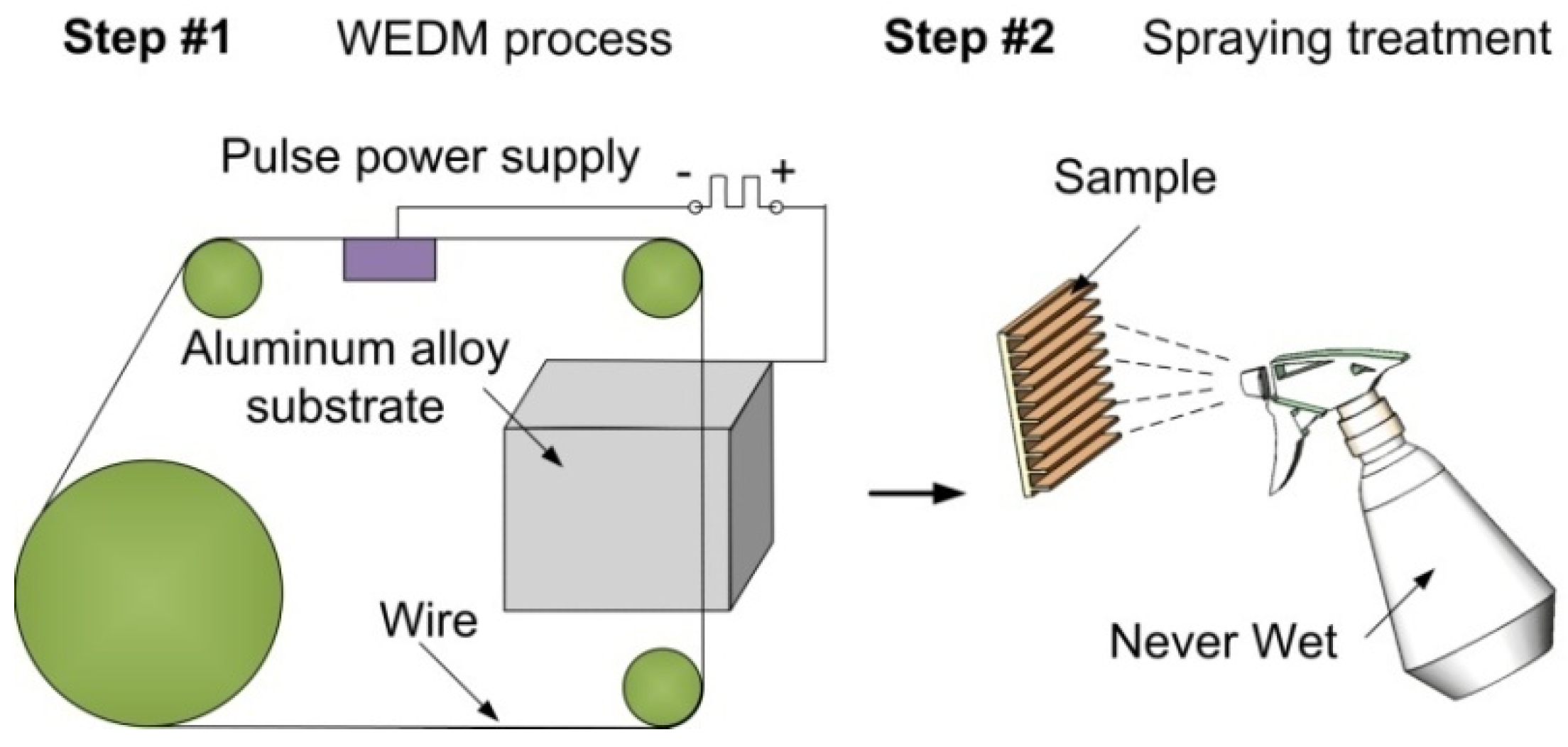
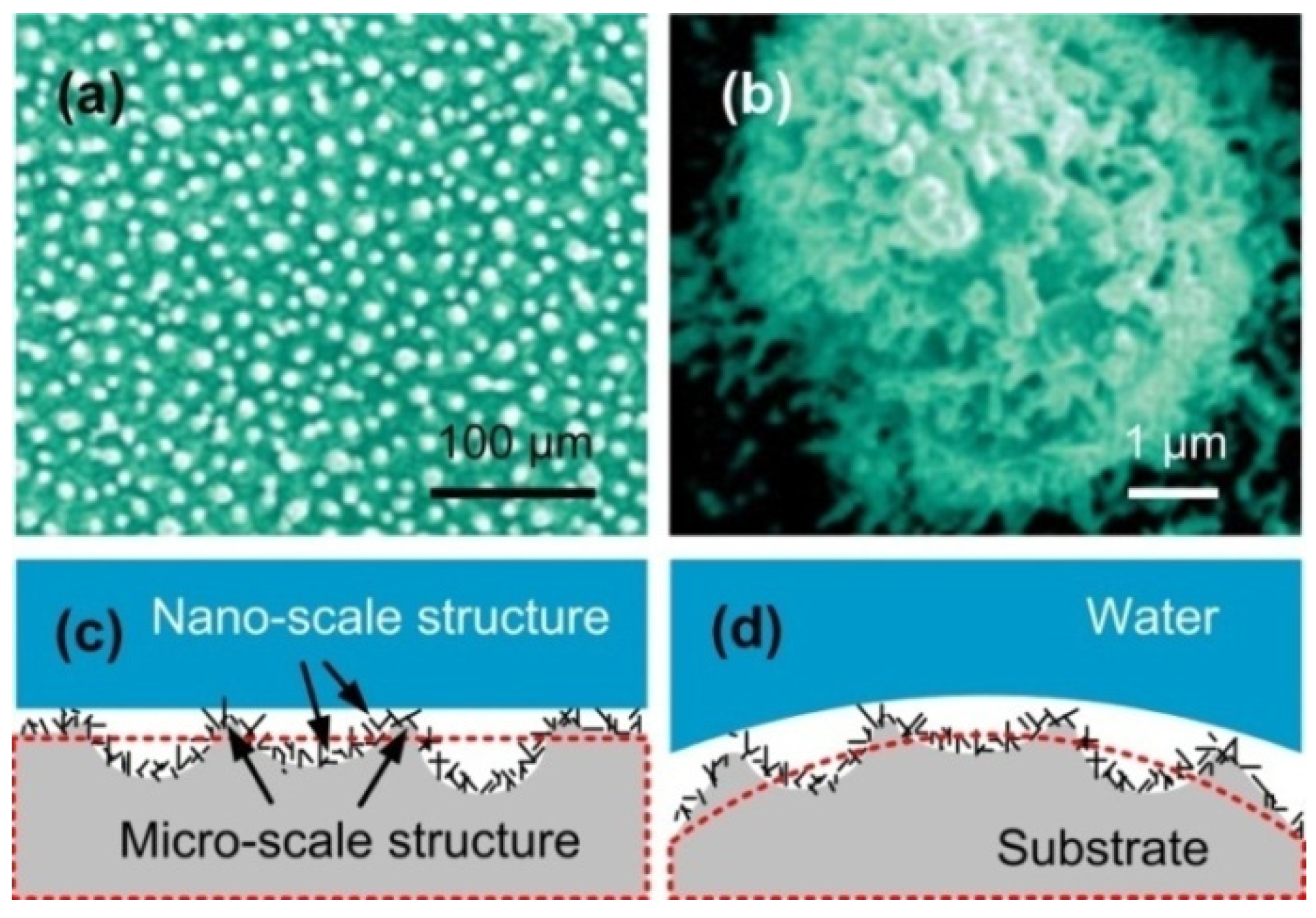
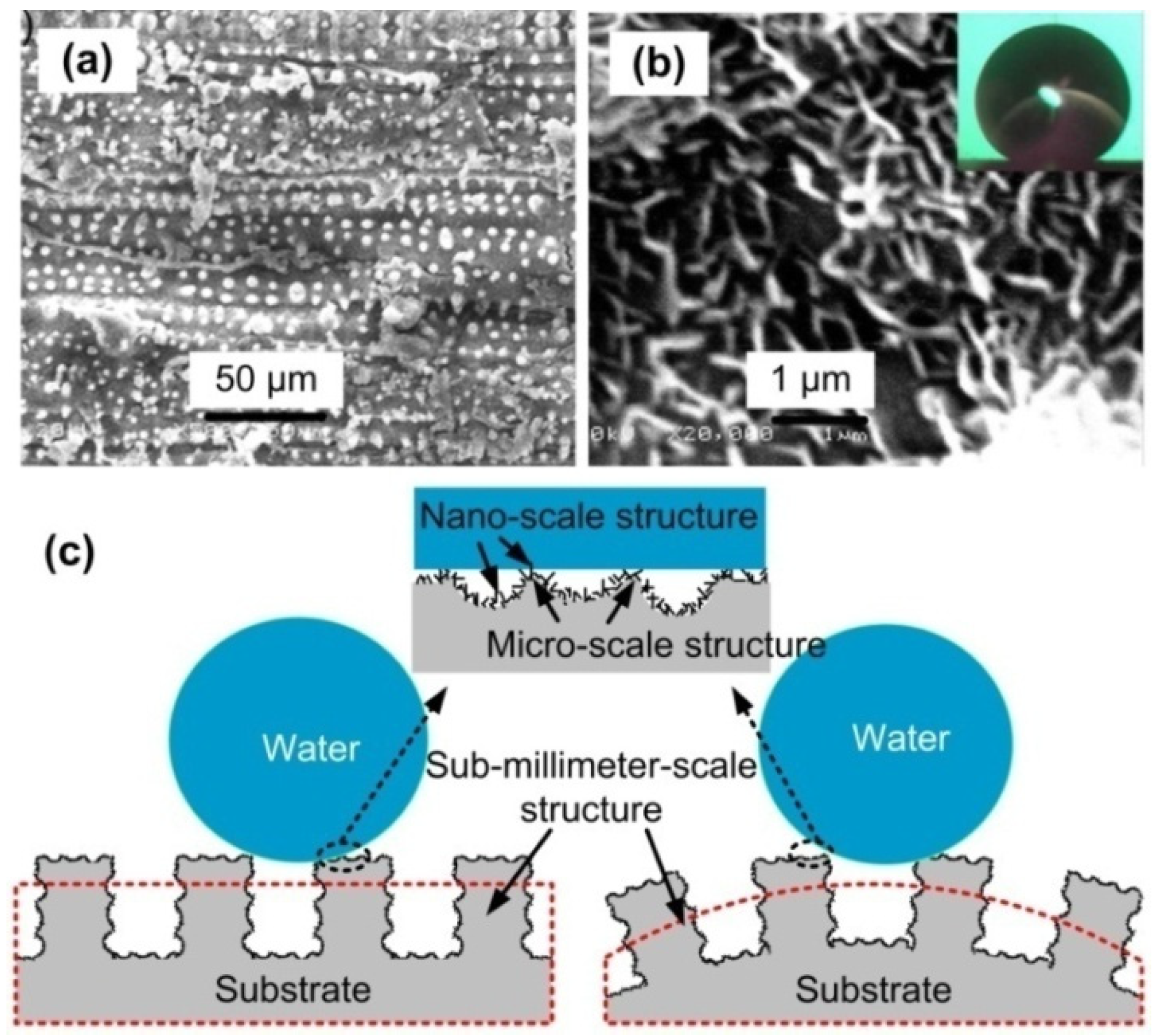
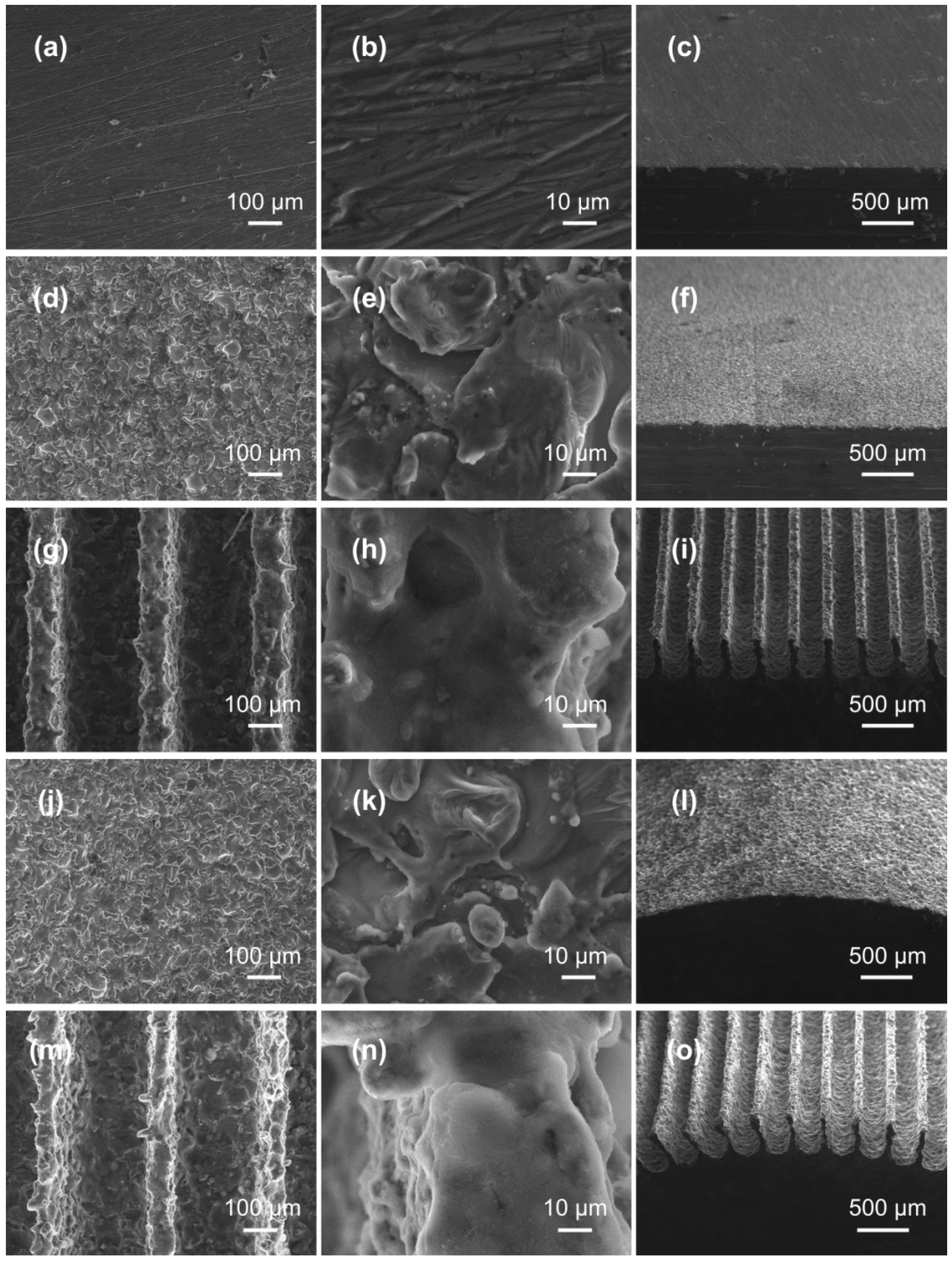
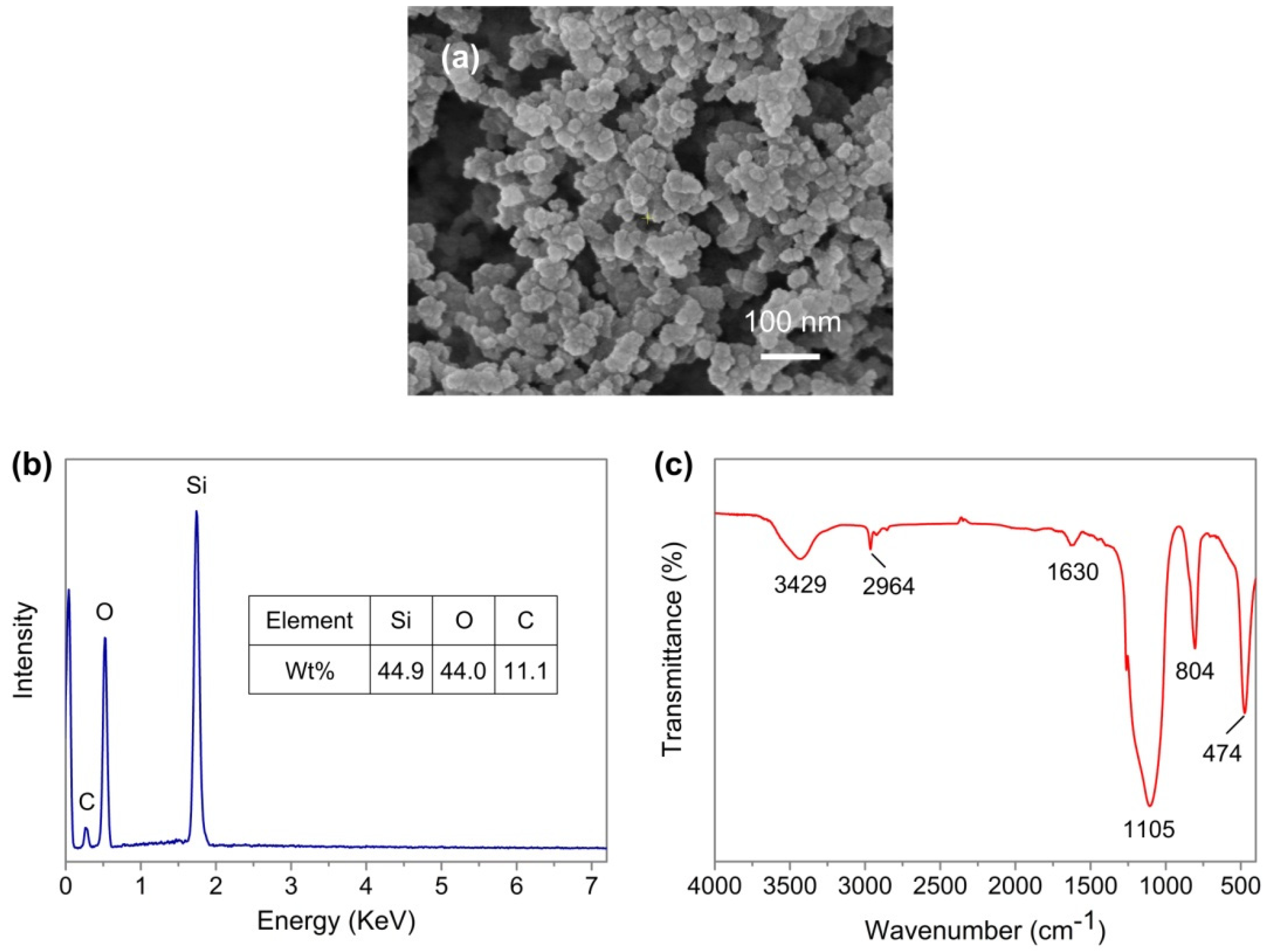
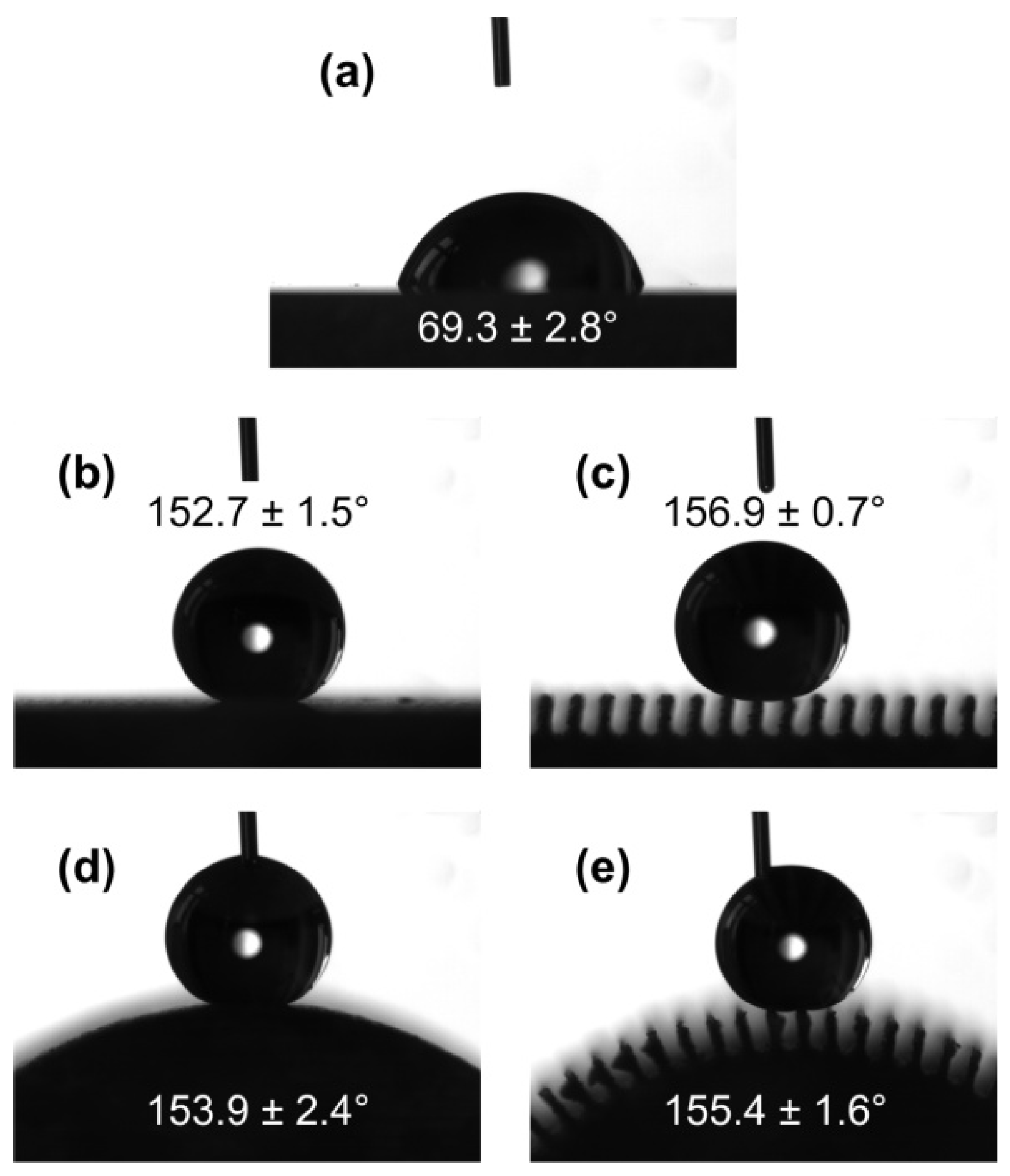

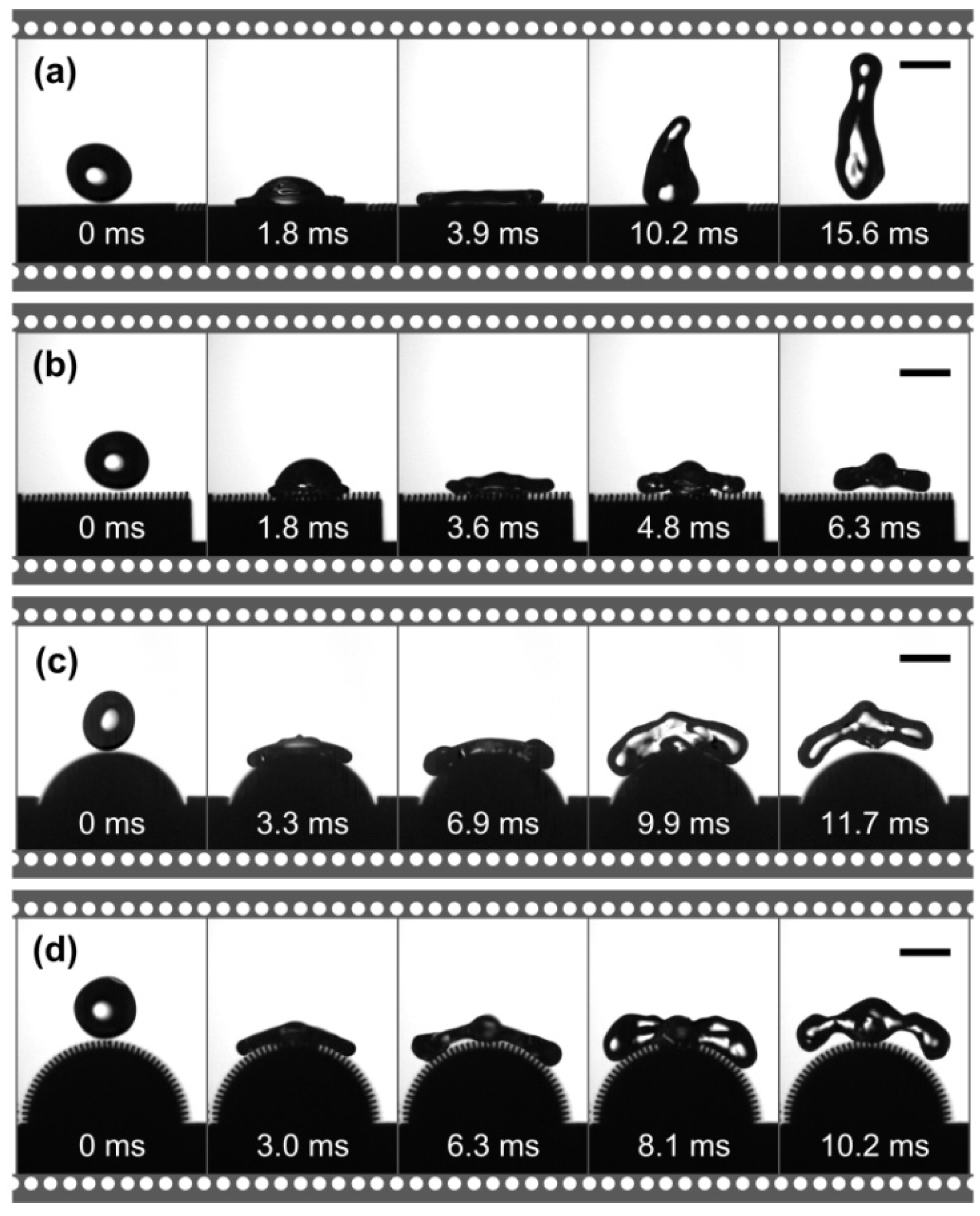
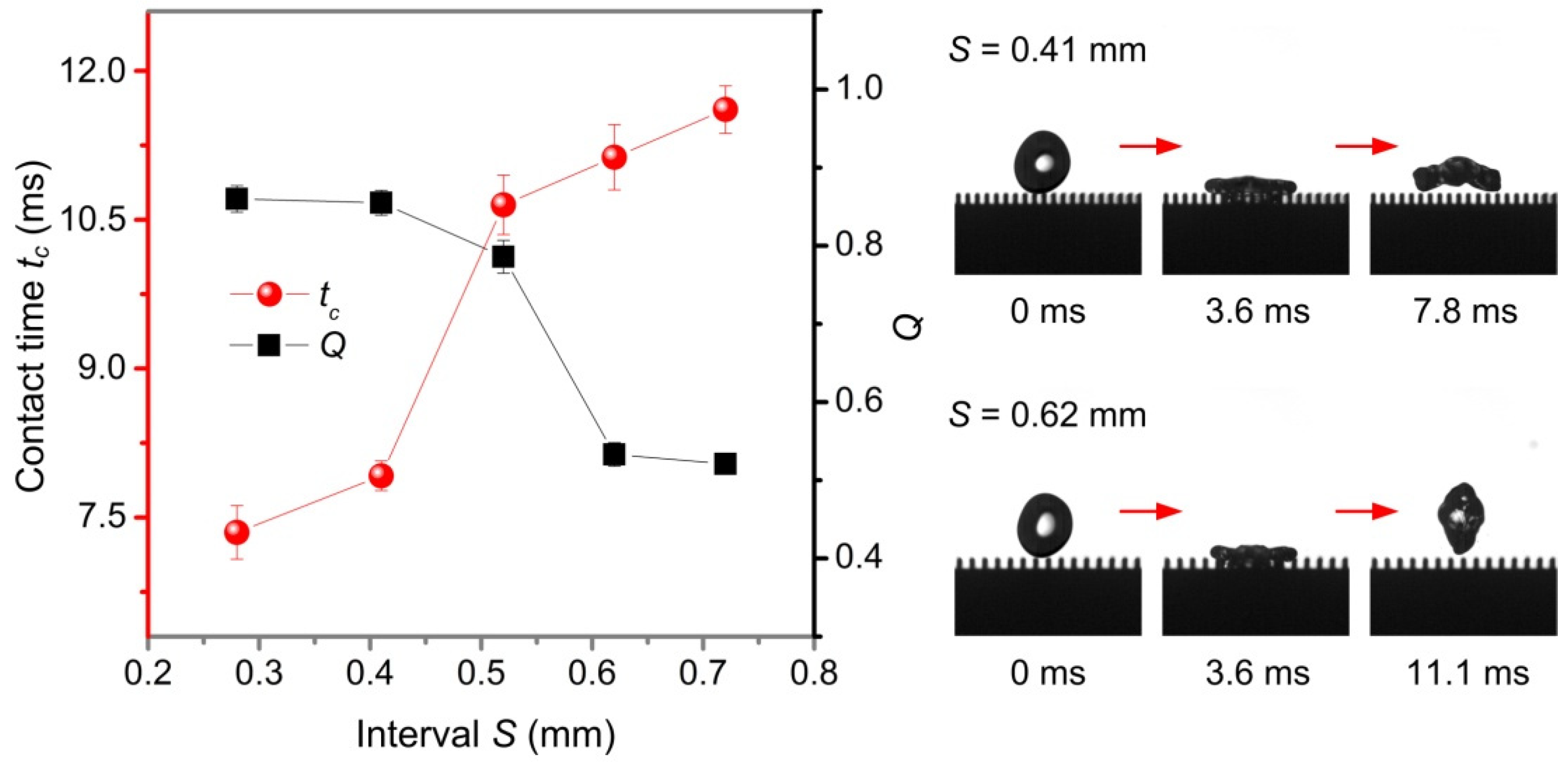
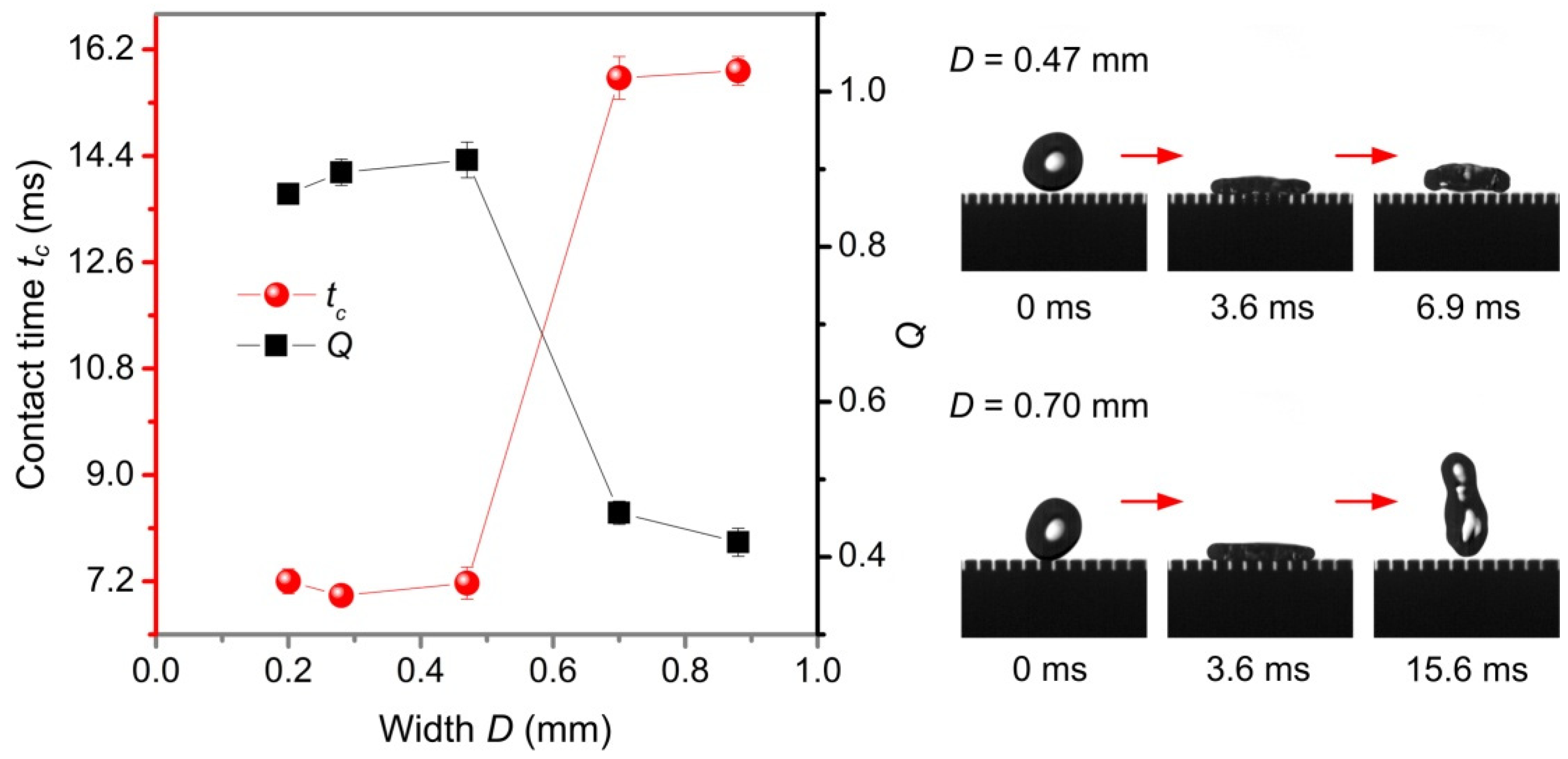
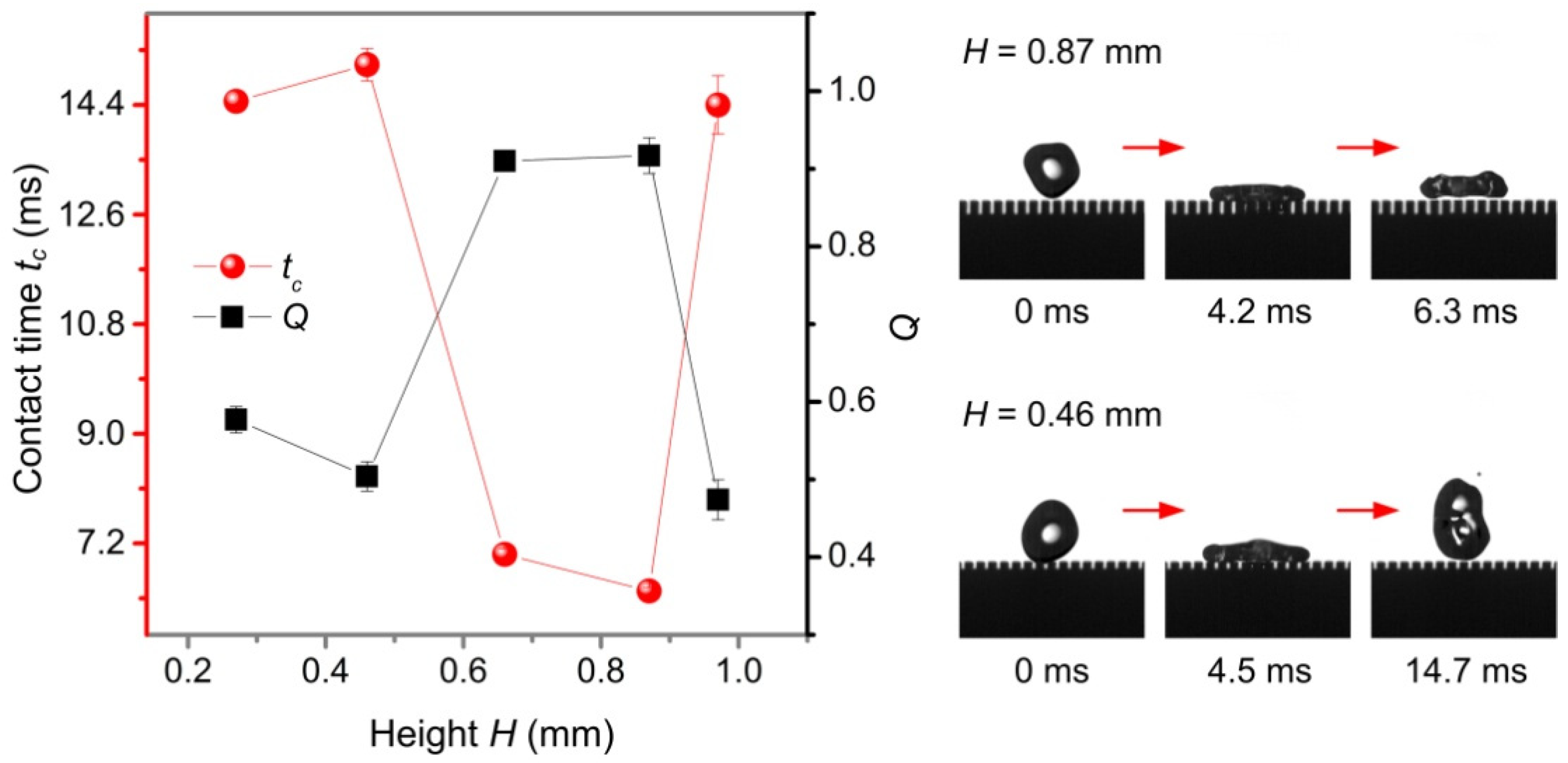
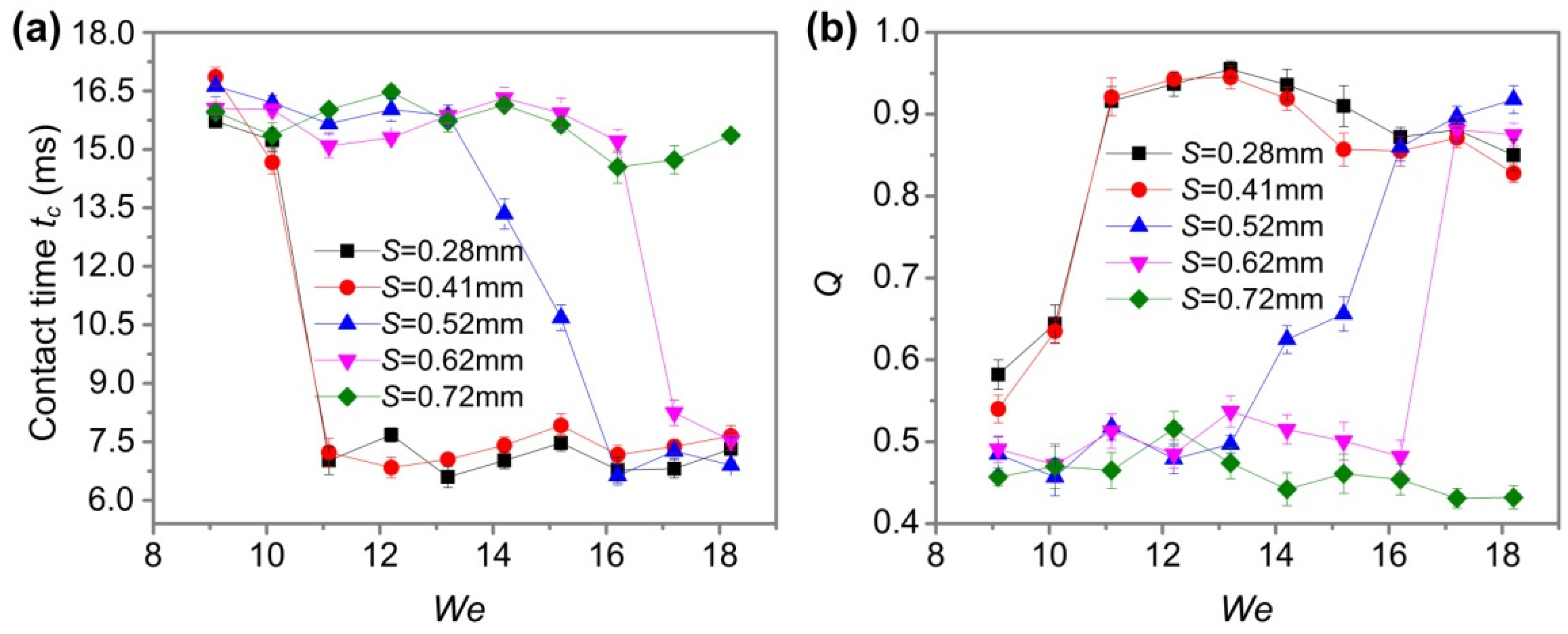
© 2019 by the authors. Licensee MDPI, Basel, Switzerland. This article is an open access article distributed under the terms and conditions of the Creative Commons Attribution (CC BY) license (http://creativecommons.org/licenses/by/4.0/).
Share and Cite
Lian, Z.; Xu, J.; Ren, W.; Wang, Z.; Yu, H. Bouncing Dynamics of Impact Droplets on the Biomimetic Plane and Convex Superhydrophobic Surfaces with Dual-Level and Three-Level Structures. Nanomaterials 2019, 9, 1524. https://doi.org/10.3390/nano9111524
Lian Z, Xu J, Ren W, Wang Z, Yu H. Bouncing Dynamics of Impact Droplets on the Biomimetic Plane and Convex Superhydrophobic Surfaces with Dual-Level and Three-Level Structures. Nanomaterials. 2019; 9(11):1524. https://doi.org/10.3390/nano9111524
Chicago/Turabian StyleLian, Zhongxu, Jinkai Xu, Wanfei Ren, Zuobin Wang, and Huadong Yu. 2019. "Bouncing Dynamics of Impact Droplets on the Biomimetic Plane and Convex Superhydrophobic Surfaces with Dual-Level and Three-Level Structures" Nanomaterials 9, no. 11: 1524. https://doi.org/10.3390/nano9111524
APA StyleLian, Z., Xu, J., Ren, W., Wang, Z., & Yu, H. (2019). Bouncing Dynamics of Impact Droplets on the Biomimetic Plane and Convex Superhydrophobic Surfaces with Dual-Level and Three-Level Structures. Nanomaterials, 9(11), 1524. https://doi.org/10.3390/nano9111524




